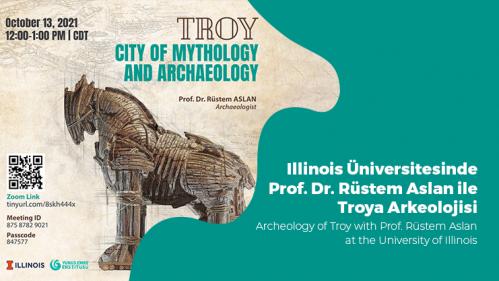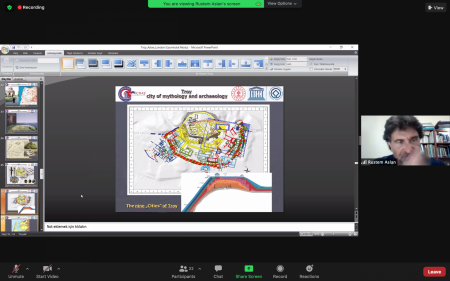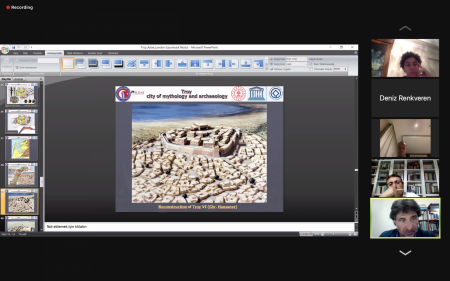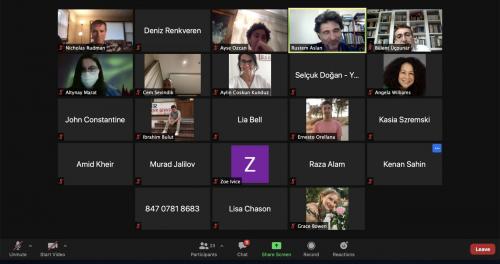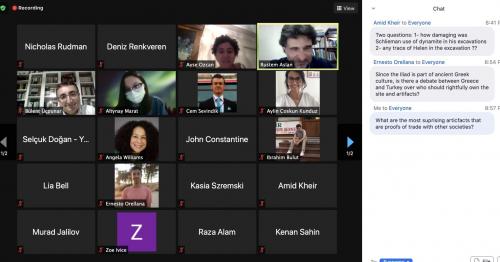Archaeology of Troy with Prof. Rüstem Aslan at University of Illinois
Together with the University of Illinois Turkish Program, Yunus Emre Institute organized an event on October 13, 2021 on the Archaeological Excavations of Troy, included in the UNESCO World Heritage List. Prof. Rüstem Aslan, the Director of the Archaeological Excavations of Troy and Faculty Member at the Çanakkale Onsekiz Mart University, Faculty of Arts and Sciences, Department of Archaeology, participated in the event as the guest speaker.
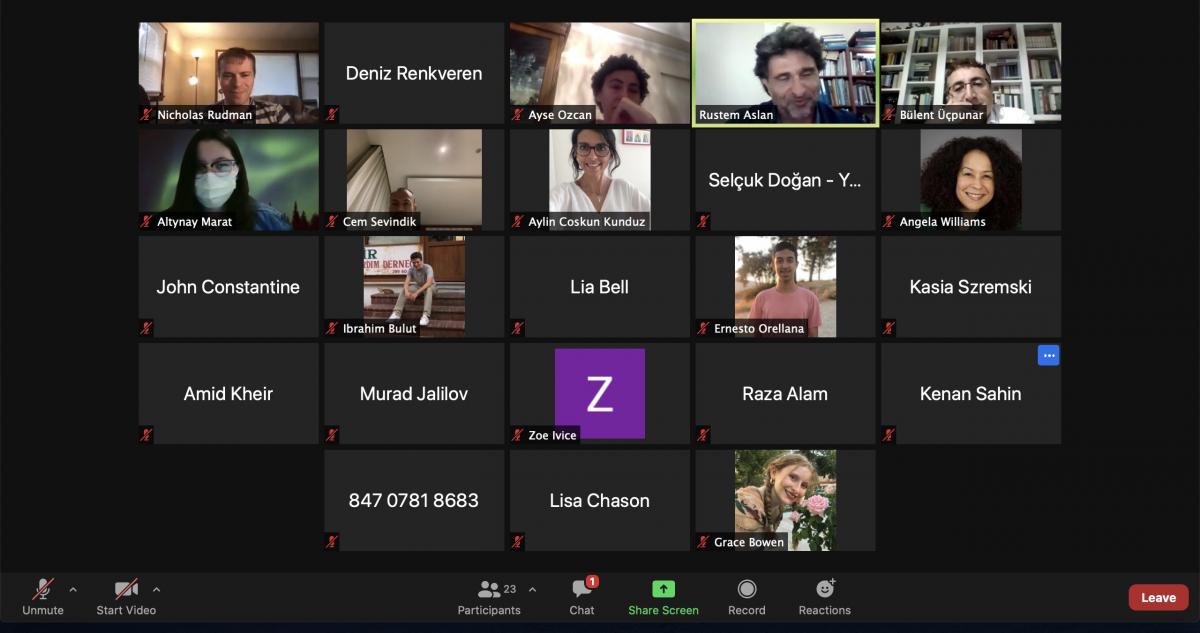
Bülent Üçpunar, Director of Toronto YEI, gave the opening speech of the program and thanked Selçuk Doğan, YEI Director of Strategical Development and Corporate Communication, Gökhan Coşkun, Director of Washington YEI, Dr. Ayşe Özcan, Director of University of Illinois Turkish Program, and Prof. Aslan. Üçpunar mentioned that he wished more collaborations could be created between Yunus Emre Institute and the University of Illinois. Üçpunar stated that some of the most important archaeological sites were located at Troy, Ephesus, Hattusa and Göbeklitepe in Turkey and emphasized that millions of people from all around the world visited these sites.
Prof. Rüstem Aslan delivered an impressive presentation about the history of excavations at the Ancient City of Troy, which is located within the borders of the Tevfikiye Village in Central Çanakkale, and the findings from these excavations.
SIGNS OF TROY IN THE ILIAD AND THE ODYSSEY
Prof. Rüstem Aslan started his presentation by stating that Troy, located between Asia and Europe, had a very important position since with 3000 BC. Prof. Aslan stated that the importance of Troy increased further with the Iliad and Odyssey, written by Homer in 730 BC.
Prof. Aslan also mentioned that the Iliad and the story of the Trojan Horse was quite well known all around the world.
THE MOST WELL-PRESERVED SAMPLE OF THE EPIC IS IN ISTANBUL
Prof. Aslan mentioned that there were two manuscripts of the Iliad, one dated to 950 AD and the other to the 10th century AD, and that the manuscript in Istanbul was exceptionally well-preserved. Famous archaeologist talked about Publius Vergilius Maro, who wrote the Aeneid, telling the story of Aeneas who fled the fall of Troy. Aslan mentioned the authors who re-wrote this epic in the Medieval Era and that there were many copies of the Iliad.
LE CHEVALIER DREW THE MAP OF TROY
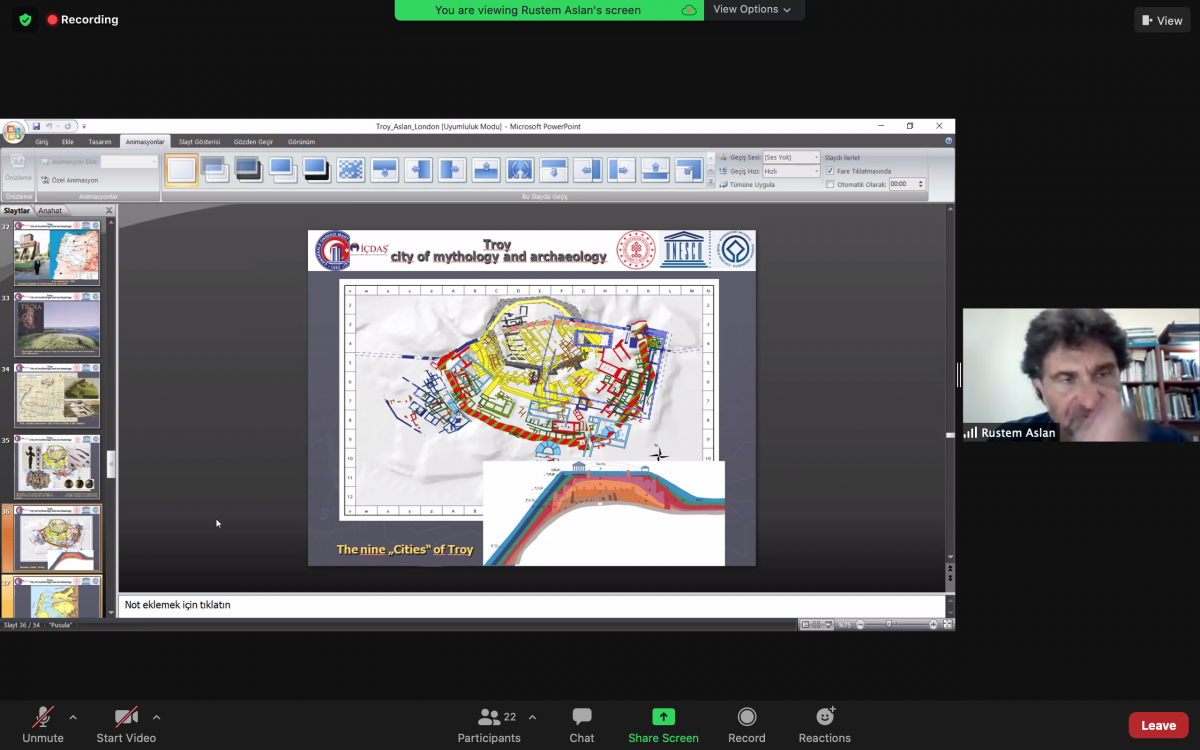
Prof. Rüstem Aslan mentioned that Jean-Baptiste Le Chevalier (1752-1836), the French archaeologist, astronomer, traveler and cartographer, tried to locate Troy with the maps he drew. After being a professor in many colleges in Paris (1772-1778), Le Chevallier assumed the position of secretary to the French ambassador in the capital of the Ottoman Empire and travelled Italy and Anatolia with this title. After his archaeological studies and papers about these locations, he became a librarian at the Sainte-Geneviève Library (1806).
Le Chevalier drew a map of Troy after his archaeological research in the vicinity of Troy in order to find the city of Troy. Le Chevalier claimed that the ancient settlement located on the hill called Ballıdağ at the Pınarbaşı locale, which is 10 km south-east of the current archaeological site of Troy/Hisarlık, was the ancient city of Troy. Le Chevalier renamed the rivers in the region according to Troy and used his own construct to create links with the text of Homer.
THE HISTORY OF EXCAVATIONS AT TROY
Famous archaeologist also talked about the history of excavations carried out the city.
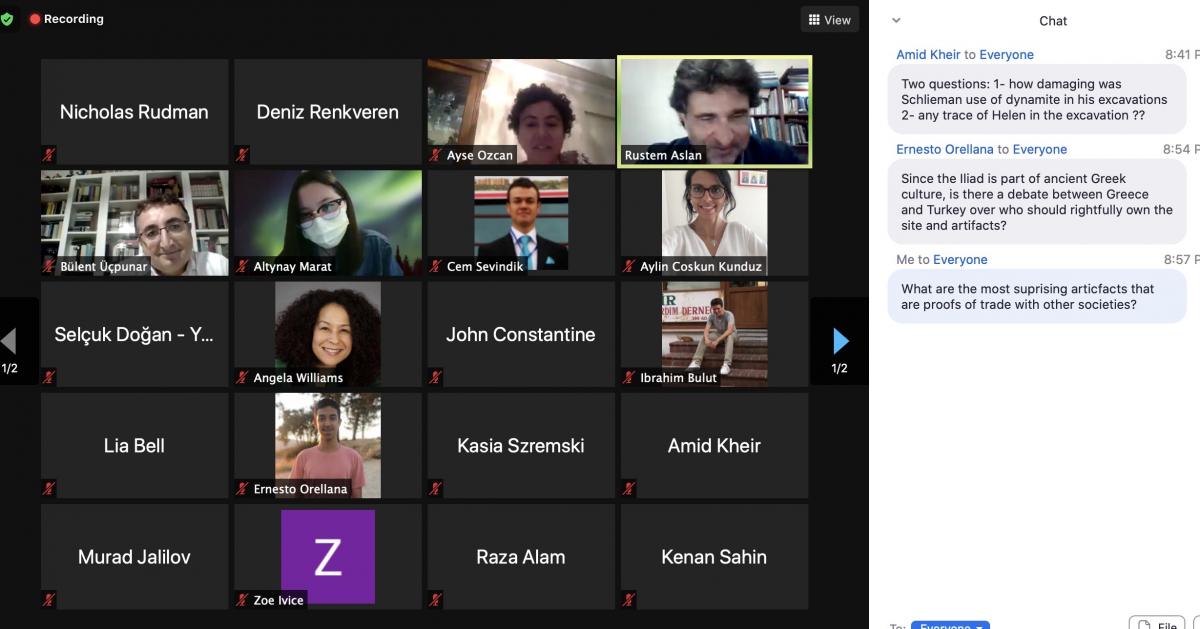
Prof. Aslan mentioned the works of archaeologists who carried out excavations and research at the Ancient City of Troy from past to today: Frank Calvert (1863-1865), Heinrich Schliemann (1870-1873, 1878, 1879, 1882, 1889, 1890), Wilhelm Dörpfeld (1893-1894), Carl W. Blegen (1932-1938), Manfred Osman Korfmann and Pernicka Rose (2005-2012).
Prof. Aslan mentioned that Heinrich Schliemann searched for the traces of Homer's Iliad in Troy and found them.
Prof. Aslan also talked about the campaign against Schliemann who smuggled the artifacts excavated from Troy to Athens. Prof. Aslan mentioned that the Ottoman Empire endeavored to control Schliemann. Prof. Aslan mentioned that Schliemann donated all the treasures he found to Germany after the exhibition in London and that the treasures were exhibited in Berlin until the Second World War.
The "Priam's Treasure", which was named after the Trojan King Priam in the Iliad, was lost after the Second World War until 1993. It was understood that the treasure was taken to Moscow by the Russian soldiers as spoils of war and was stored at the storages of the Pushkin Museum. Prof. Aslan stated that there were more than 10,000 gold, silver and bronze coins at the Pushkin Museum.
Prof. Aslan also talked about the Troy Museum, which was opened by President Recep Tayyip Erdoğan on March 18, 2019 and which contained the pieces and artifacts from the Troy excavations.
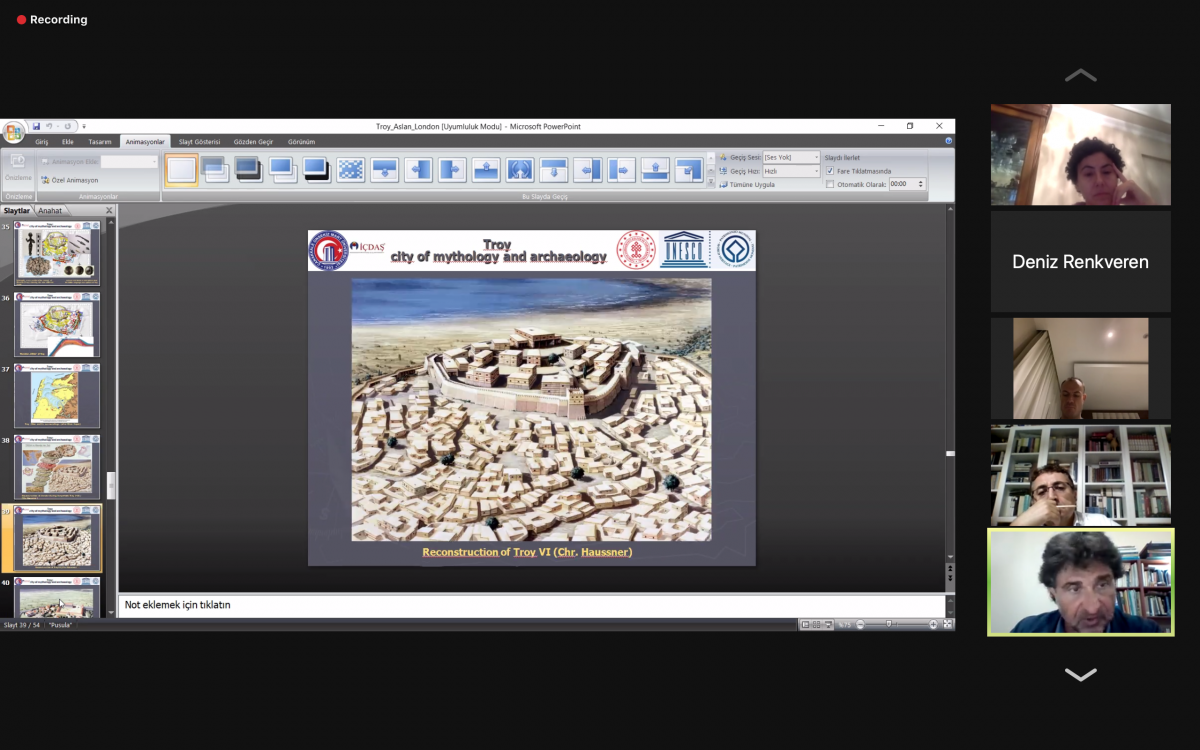
Prof. Aslan answered the questions of the participants about the Ancient City of Troy after his presentation. Answering the question regarding the most interesting object from the excavations that proved the trade with other civilizations, Prof. Aslan stated that lapis lazuli, which is only extracted in Africa, was found in the excavations and this was quite surprising for them. Prof. Aslan mentioned that this finding could be the proof that there was trade between the city of Troy and Africa.
Prof. Aslan delivered many seminars on Troy at universities, archaeological institutes and museums across the world. Prof. Rüstem Aslan's book on research and excavations at Troy, "Troy for Beginners" was published both in English and Turkish. Prof. Aslan also served as a consulted at the Archaeology Summer School of Yunus Emre Institute.

